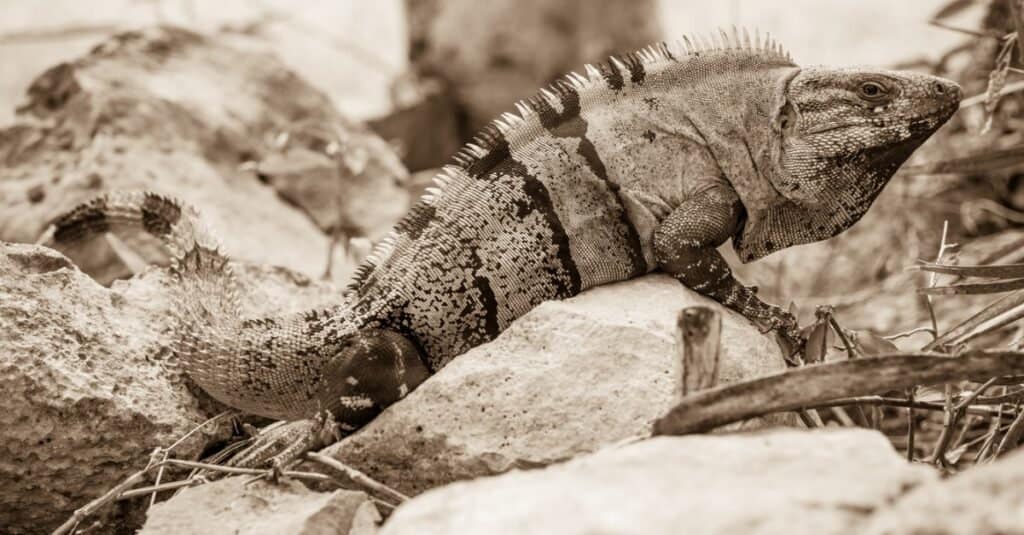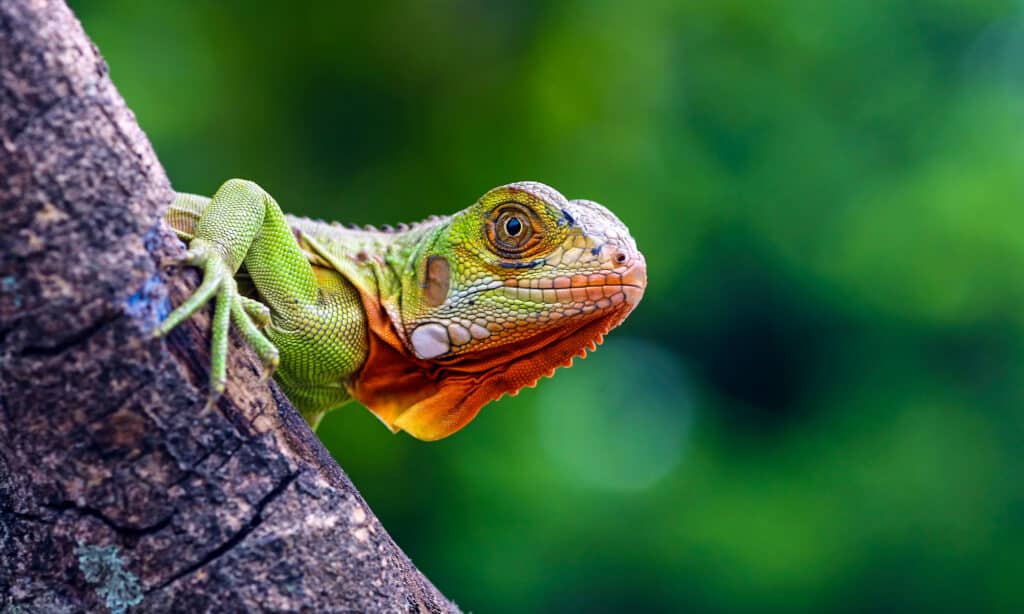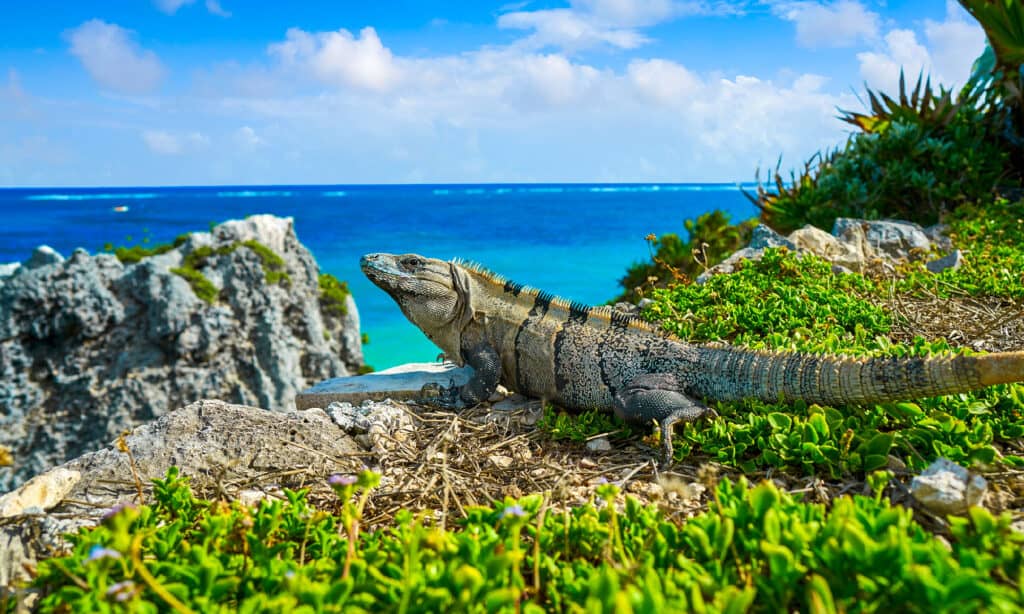This iguana is clearly unhappy about a monkey invading its personal space. It responds with a tail whip, which immediately winds up the primate even more. The monkey grabs hold of the iguana’s tail! Scroll down to watch the full video of this incredible encounter.
Watch the Fascinating Footage Below!
@abelrios766 #monkey #monos #iguana #veryfunny #divertido ♬ Ketawa Bayi Ngakak – Faid rafanda
What Do Iguanas Use Their Tail for?

Iguanas use their tails for balance, swimming, and striking potential predators.
©iStock.com/passion4nature
The tail is a vital part of the iguana’s body and makes up a large part of its length. They use it for balance and swimming. However, the most spectacular purpose is for whipping their enemies.
Anyone or anything that makes the iguana feel uncomfortable risks getting lashed by their powerful tail and it hurts! It may not cause any broken bones in humans but it can graze the skin.
A full tail whip is usually preceded by stiffening the tail, sweeping the tail, and finally twitching. If this happens, it is wise to get out of the way!
Do Iguanas Really Lose Their Tails?

Iguanas can lose their tails if grabbed by a predator.
©iStock.com/Cuadro Veinte
Yes, they can and it can be very distressing for pet iguana owners when they do! Like many other lizards, iguanas “self-amputate” their tails, which is also called “tail autotomy.” It is a defense mechanism that allows the iguana to get away when they are grabbed by the tail by a predator.
A detached lizard tail can twitch for 30 minutes — this distracts the predator whilst the lizard makes its escape.
This amazing feat is achieved thanks to built-in natural fracture lines along the tail. During times of danger, the iguana contracts muscles around the fracture line and this releases the tail. The blood vessels and nerves are completely severed although there is usually very little bleeding.
What Is the Skin Beneath an Iguana’s Chin Called?

The iguana’s dewlap can be puffed up to signal aggression when threatened.
©Agus_Gatam/Shutterstock.com
You may notice in this clip that the iguana has a round structure hanging beneath its chin. This is another interesting anatomical feature of iguanas and is called a dewlap.
It is also seen in other animals such as lizards, some birds, and rabbits. In iguanas, it can be puffed up to signal aggression and this happens when they feel threatened. Experts also think that it plays a role in territorial displays, courtship, and temperature regulation.
Is it Normal for Monkeys and Iguanas to Interact?

Monkeys and iguanas are often put together in zoo enclosures and learn to get along.
©Ahmad Darmansyah/iStock via Getty Images
It is highly unlikely that monkeys and iguanas would interact in the wild – but it is possible that the pair in the video were actually friends playing together! Monkeys and iguanas are often put together in zoo enclosures and have been known to become good friends.
Krefeld Zoo in Germany is home to a famous friendship between a green iguana and a marmoset monkey that has captured the hearts of everyone who sees them. After the two were put in the same tropical habitat, the affectionate monkey started massaging and grooming the iguana as if it were a fellow primate. The iguana liked it – and the two quickly became fast friends!
Even though they are free to roam the entire enclosure freely – they choose to spend their time together in the tall trees. Reports of other iguana/monkey friendships have been shared by other zoos – so maybe the animals in the video were just playing!
How Large Do Iguanas Get?

Iguanas can get fairly large but they are non-aggressive reptiles.
©iStock.com/LUNAMARINA
Iguanas are known to grow to a staggering 7 feet long, tail included. However, fully grown, iguanas are 5.6 feet in length on average. They can weigh up to about 20 pounds, and as a result, a large enclosure is required.
Iguanas are herbivores and are fairly relaxed pets. They may grow to be quite large, but bites and attacks are very rare. They are not naturally aggressive towards people or other animals unless provoked. However, as we can see in the below video when threatened, iguanas can use their tail to whip at and threaten potential predators.
The photo featured at the top of this post is © DWI YULIANTO/Shutterstock.com
Thank you for reading! Have some feedback for us? Contact the AZ Animals editorial team.







